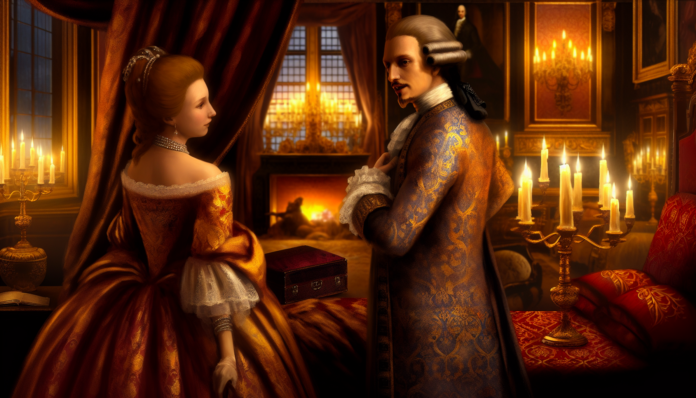Royal Romances: How Kings’ Secret Lovers Altered the Course of History
Introduction
Throughout history, monarchs have often carried the heavy burden of power alongside the weight of their desires. Among these tales of clandestine romances, few have had as profound an impact as that of King Henry VIII of England and Anne Boleyn. Their affair not only sparked one of the most significant religious transformations in history but also reshaped the very fabric of English society during the early 16th century.
At a time when the monarchy was intertwined with the Catholic Church, the prevailing moral attitudes favored chastity, loyalty, and the sanctity of marriage. Yet, the passionate love affair between Henry and Anne challenged these societal norms, proving that love, lust, and ambition could alter the course of history.
The Scandal
The story begins around 1525 when King Henry VIII, already married to Catherine of Aragon, fell head over heels for the young and ambitious Anne Boleyn. Initially, Anne resisted his advances, reflecting societal expectations of female virtue, yet Henry’s determination only intensified his pursuit. By 1533, their romance led to a dramatic break with the Catholic Church after the Pope refused to annul Henry’s marriage to Catherine.
Key events include:
- The Marriage (1533): Henry secretly married Anne, a move that was both illicit and audacious at the time. The marriage prompted excommunication from the Catholic Church.
- The Pregnancy Announcement (1533): The couple’s announcement that Anne was pregnant further scandalized society. The birth of their daughter, Elizabeth, was celebrated; however, expectations for a male heir led to growing tensions.
- Turning point (1536): After failing to produce a male heir and coinciding with courtly accusations, Anne was arrested on charges of adultery, treason, and incest; the latter two likely fabricated to justify her downfall.
In the court of public opinion, reactions were mixed. While some celebrated the King’s desire for a new beginning, others were horrified at the perceived immorality. A contemporary chronicler remarked, “For Henry’s desires are as a lion; they devour the very foundation of our faith.”
Moral and Cultural Analysis
At the time, societal reactions were reflective of the tumultuous uncertainties surrounding power and religion. While Henry’s actions were seen as a challenge to traditional moral values, they also spurred the English Reformation—a shift towards Protestantism that would redefine religious practices and authorities in England.
Consequences for those involved were dire:
- Anne Boleyn’s Execution (1536): Following her arrest, Anne was executed, and Henry married Jane Seymour soon after, looking for that coveted male heir.
- Political Ramifications: The establishment of the Church of England reshaped religious and political landscapes across Europe.
If such a scandal were to occur today, it would still spark controversy, but public and media reactions would likely differ significantly. In a modern context, there would be a crescendo of public interest and likely a media frenzy, with focuses on transparency and accountability. The notion of personal freedom and the rights of individuals—maligned in the past—would take precedence, drawing lines around consent rather than merely moral judgment.
While Henry VIII’s love story with Anne Boleyn remains a history-defining episode, it serves as a reminder of how passionate exploits can ripple through the tapestry of time, affecting empires, religions, and entire nations in unforeseen ways.

